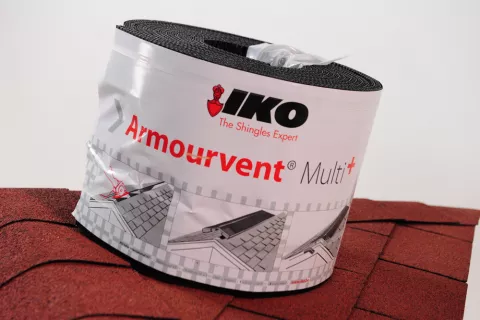
How to keep your shingles roof winter proof
The cold winter days are just around the corner. So in order to make sure you’ve got some peace of mind during the next months, we give you some tips and tricks to have a winter proof shingles roof.
1. Walk around your house and see if there are any problems are visible from ground level. An example can be tree branches growing near your roof, which can possible damage your house during a winter storm or break off due to heavy snow.
2. Check your roof inside and out, but always use the necessary safety precautions. Keep the gutters clear from any obstructions. If you do this check-up during winter weather, make sure your roof is free of nearly invisible ice or frost build-up on the roof or deck surface.

3. Check your attic after a rain shower. If there are leaks, water stains will clearly show this. Especially areas where 2 types of material meet, such as chimneys and gutters, are known leakage areas. These different materials tend to separate over time, because they don’t bond well.
4. When removing snow or ice from a valley or other roof areas, proper care must be taken to avoid damaging the roof. For safety, use a long extension tool. Never climb onto a wet or snow covered roof. Don’t use a shovel to remove snow, this might damage your shingles roof.

Which winter precautions can you take when installing a new shingles roof?
Ventilate your roof:
Ventilating your roof will equalize the temperature of the outer and inner roof. Your roof structure will then be able to withstand sudden temperature changes. More information about ventilation can be found in our blog on roof and attic ventilation.

Snow stoppers:
A snow stop has to be nailed in the head lap. Follow the manufacturer’s instructions about the required quantities for every m². The next shingle course will cover the nails of the installed snow stop.
Preventing ice dams:
Ice dams are the results of continuous freezing and thawing of snow due to escaping heat from the house or from gutters being backed up with frozen slush. This can happen to most kinds of roofing material; if it occurs, water may be driven under the roof, which may cause ceiling, wall, insulation and gutter damage. Ice dams can be prevented by:
1) Installing a vapour barrier above the home’s warm space.
2) Insulating the attic.
3) Ventilating the attic.

What to do when you install a new roof during winter?
Proper performance from shingles installed and used in cold weather can be achieved by following the recommendations listed below: Make sure that the roof is properly ventilated. Be careful when handling shingles in cold weather. If you are in an area that experiences freezing winter temperatures, eaves protection should be used to reduce water damage from ice dam formation.

Use a self-adhesive underlay like IKO’s Armourbase Stick. It is easier to work with in cold weather. Handseal bitumen roof shingles in cold weather with a mastic containing elastomeric polymers like IKO’s Shingle Stick. When applying ridge caps, keep the shingles that are being used as ridge caps in a warm place; so, they will be flexible enough to bend.

Whether you are winter proofing your roof or installing a new one, always use caution if walking on the roof during wintertime. Good luck!





